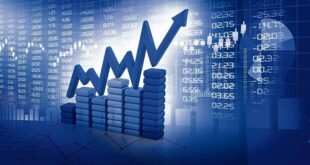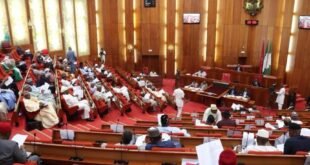Polyvinyl Chloride (PVC) is a synthetic plastic polymer made from the polymerization of vinyl chloride. It is one of the most widely produced plastics in the world, known for its versatility, durability, and affordability. PVC is composed of two base materials: chlorine derived from industrial-grade salts and ethylene, derived from petroleum or natural gas. The result is a highly durable and malleable material that can be produced in both rigid and flexible forms.
In its rigid form, PVC is commonly used in the construction industry for pipes, window frames, doors, and other structural applications. In its flexible form, PVC is used for a variety of purposes such as electrical cable insulation, flooring, and roofing membranes. Its resistance to environmental degradation, chemicals, and moisture makes PVC an ideal choice for many building applications.
How PVC Gained Popularity in Nigerian Buildings
The rise in popularity of PVC in the Nigerian construction industry can be traced back to the late 20th century, when the demand for affordable and durable construction materials increased. Before PVC was widely used, construction in Nigeria largely relied on traditional materials such as wood, metal, and concrete, each of which had its own limitations.
Wood, while beautiful to look at, is susceptible to termites, rot and warping, especially in Nigeria’s humid climate. Metal is susceptible to rust and corrosion, and concrete, while strong, is often expensive and difficult to shape into intricate shapes.
As Nigeria’s economy grew, fueled by oil revenues and urbanization, there was a push to modernize infrastructure and housing. PVC emerged as a solution to the challenges posed by traditional materials. Its versatility, affordability, and resistance to environmental factors made it an attractive option for builders and architects. The ability to mass-produce PVC products also meant that they could be available to a wider market at a lower cost.
PVC’s popularity grew with the advent of PVC ceiling panels, doors and windows, which became common features in homes and commercial buildings in Nigeria. These products offered a modern look, were easy to maintain and provided a practical alternative to more expensive materials. Over time, PVC’s use expanded to other areas such as piping, wiring and interior cladding, further cementing its place in the Nigerian construction industry.
The Importance of PVC
The importance of PVC in building construction cannot be overstated. Its role in modern architecture and construction has changed the way buildings are designed and built. Here are some of the main reasons why PVC is so important in construction:
1. Cost Effectiveness: One of the main reasons for the widespread use of PVC is its cost. Compared to traditional materials such as wood, metal, and glass, PVC is relatively inexpensive. This affordability allows builders to keep construction costs down while maintaining quality.
2. Durability: PVC is resistant to weathering, chemicals and corrosion, making it ideal for use in harsh environmental conditions. Whether in the humid climate of Lagos or the dry heat of the north, PVC products are built to last, reducing the need for frequent replacement.
3. Flexibility: PVC can be molded into a variety of shapes and sizes, making it suitable for a wide range of applications. From pipes and fittings to window frames and ceiling panels, the material can be used in almost every aspect of building construction.
4. Low Maintenance: PVC requires minimal maintenance. It does not need to be painted, primed, or sealed, unlike wood or metal. This reduces the long-term costs associated with building maintenance.
5. Energy Efficiency: PVC’s insulating properties make it an excellent choice for windows and doors, helping to maintain indoor temperatures and reduce energy consumption in buildings.
6. Security: PVC is a safe material for use in construction. PVC is fireproof and non-flammable. In the event of a fire, PVC products tend to be able to extinguish the fire by themselves, thereby reducing the spread of fire.
7. Environmental Impact: Although PVC is a plastic, advances in recycling technology have made it possible to recycle PVC products, reducing their environmental impact. Many PVC manufacturers now produce eco-friendly options made from recycled materials.
PVC Advantages
PVC offers many advantages that make it an attractive choice for builders, architects and homeowners:
1. Light: PVC is much lighter than traditional building materials such as wood or metal. This makes it easier to transport, handle and install, reducing labor costs and construction time.
READ ALSO: Gutter systems in buildings: Protecting your property from water damage
2. Waterproof: PVC’s resistance to moisture makes it an excellent material for use in piping and roofing applications. PVC does not rot or degrade when exposed to water, ensuring long-lasting performance in wet conditions.
3. Resistant to Chemicals: PVC is highly resistant to chemicals, acids and alkalis, making it suitable for use in industrial applications where exposure to harsh substances is common.
4. Aesthetic Appeal: PVC products are available in a variety of colors, textures, and finishes, allowing builders to achieve the desired aesthetic look for their projects. Whether it’s a glossy finish for a modern interior or a wood grain texture for a classic look, PVC offers endless design possibilities.
5. Noise Isolation: PVC’s insulating properties extend beyond thermal insulation. PVC also provides excellent sound insulation, making it ideal for use in windows, doors and walls to create a quieter indoor environment.
6. Recyclable: PVC is one of the few plastics that can be recycled multiple times without losing its properties. This makes it a more sustainable choice compared to other plastics, which often degrade with each recycling cycle.
7. Flexibility: Flexible PVC can be used in applications where traditional rigid materials are not possible. These include electrical cable insulation, flooring, and flexible pipe.
Disadvantages of PVC
While PVC offers many advantages, it also has some disadvantages to consider:
1. Environmental Concern: PVC production involves the use of chlorine, which can release hazardous chemicals if not managed properly. In addition, disposal of PVC products at the end of their life cycle can pose environmental challenges, as they are not readily biodegradable.
2. Toxicity: When PVC is burned, it can release toxic fumes, including dioxins, which are harmful to human health and the environment. This makes improper disposal of PVC products a serious problem.
3. Limited Temperature Resistance: Although PVC is resistant to many environmental factors, its temperature range is limited. Exposure to extremely high or low temperatures can cause PVC to warp, crack, or become brittle.
4. Not as strong as metal: Although PVC is durable, it is not as strong as materials such as steel or aluminum. For applications that require high structural strength, PVC may not be the best choice.
5. Plastic Appearance:Despite advances in design, some people still consider PVC to have a “plastic” look, which may be undesirable for certain high-end or luxury applications.
6. Potential for Degradation: Over time, PVC can degrade when exposed to UV radiation from the sun. This can cause discoloration, brittleness, and loss of structural integrity, especially in outdoor applications.
Conclusion
PVC is a valuable material in the construction industry, offering a balance between cost, performance, and flexibility. As the construction landscape continues to evolve, PVC usage will likely remain prominent, especially with continued advancements in recycling and sustainable manufacturing methods. Builders, architects, and homeowners should weigh the benefits and drawbacks of PVC to make an informed decision that aligns with their specific needs and environmental concerns.
By Dennis Isong
The Importance of PVC in Your Building first appeared on Latest Nigerian News | Headlines from Ripples Nigeria.
 JamzNG Latest News, Gist, Entertainment in Nigeria
JamzNG Latest News, Gist, Entertainment in Nigeria









